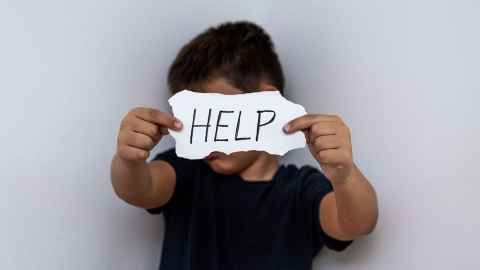Seizing tamariki, damaging taonga
7 June 2023
Children’s rights in Aotearoa are being breached thanks to an outdated Act that’s allowing for their seizure and delivery to a person with a proprietary claim over them, writes Carrie Leonetti.

Opinion: Under traditional English law, children had few legal rights. They were essentially the property of their legal guardians and had a legal status roughly the equivalent of pets and livestock. By the mid nineteenth century, severe maltreatment and incest had been outlawed, but parents otherwise still had total dominion over the children.
In pre-colonial tikanga, by contrast, mokopuna were taonga, and to harm them was to harm the atua. Unlike in Victorian Britain, in pre-colonial Aotearoa, violence against tamariki was almost entirely absent.
When the English colonised Aotearoa in 1840, they imposed their laws governing divorce, guardianship, and custody of children on their new territory of New Zealand. In the process, the cherished status of tamariki Māori, like so many other aspects of tikanga, was decimated by colonisation. The breakdown of traditional whānau structures damaged the environments required for the safe upbringing of children.
The provisions of the Care of Children Act that authorise the Family Court to issue warrants for the seizure of children to ‘enforce’ its care and contact orders are remnants of the period in English history in which children were property. Child-custody laws in Victorian England were originally derived from the laws of inheritance and property ownership. The language of ‘custody’ and ‘access’ demonstrates children’s status as property under the law. ‘Custody’ is what an owner has over a chattel, an item of personal property. ‘Access’ is what an owner, renter, or temporary possessor of land has to it.
These arrests treat children like chattel, constitute unlawful arrests, and have become instruments by which abusive parents dominate and control children who are exercising self-help to secure their safety.
In 1993, Aotearoa New Zealand ratified the United Nations Convention on the Rights of the Child. In 2004, Parliament adopted the Care of Children Act, changing the terms ‘custody’ to ‘care’ and ‘access’ to ‘contact’. The changes were meant to signify a philosophical shift, through which children were recognised as human beings with human rights and parents were recognised as having obligations to children rather than rights of ownership over them. They were meant to recognize children’s humanity and bring Aotearoa New Zealand in line with its obligations under Convention.
The Act nonetheless continues to authorise an ‘enforcement’ mechanism for the seizure and delivery of children to a person with a proprietary claim over them. Unlike the controversial ‘place of safety’ uplift warrants that Oranga Tamariki seeks, a parent wanting the Family Court to arrest their child and hand them over under the Care of Children Act does not have to show that the child is in danger. They only need to show that the child is not in the place at the time ordered by the Court.
The Court is supposed to consider whether issuing one of these warrants would serve the welfare and best interests of the child whose arrest is being sought, but, in practice, the Court does not engage in a best-interests analysis prior to issuing these warrants (because, of course, it is essentially never going to be in a child’s best interests to be forcibly arrested and delivered by police to a parent).
The way that the courts discuss these warrants demonstrates that the primary focus of the practice is on the rights of the parent who is being denied their court-ordered visits with a child and/or the Family Court’s need to ensure its authority rather than on the rights or welfare of the children being arrested.
Court orders issuing these warrants talk about the ‘rights’ and ‘entitlements’ of parents to contact their children. These comments fail to give the best interest of the children due weight. The ‘right to contact’ belongs to the child, not to their parents.
These practices make sense only if the children who are being repossessed by court order are property not people. The dog catcher does not ask a dog why it has run away or whether it wants to be returned to its owner, and the Family Court does not ask a child who is refusing contact with a parent why they are resisting the court-ordered visits or whether they want to be forcibly delivered into it by police.
The child-arrest provisions of the Care of Children Act are vestiges of the colonial era when children in Victorian England were the property of their ‘custodians.’ These arrests treat children like chattel, constitute unlawful arrests, and have become instruments by which abusive parents dominate and control children who are exercising self-help to secure their safety. They are an unconscionable breach of these kids’ human rights.
As Justice Quinn of the Ontario Superior Court of Justice succinctly put it: “When parties involve police in their access disputes, they might as well climb onto the roof of their house, straddle the peak, and, with outreached arms, proclaim to the heavens that they have failed as parents and as human beings.”
Associate Professor Carrie Leonetti, Faculty of Law, is an internationally recognised expert on the intersection of science and the law.
This article reflects the opinion of the author and not necessarily the views of Waipapa Taumata Rau University of Auckland.
This article was first published on the New Zealand Herald.
Media contact:
Sophie Boladeras, media adviser
M: 022 4600 388
E: sophie.boladeras@auckland.ac.nz